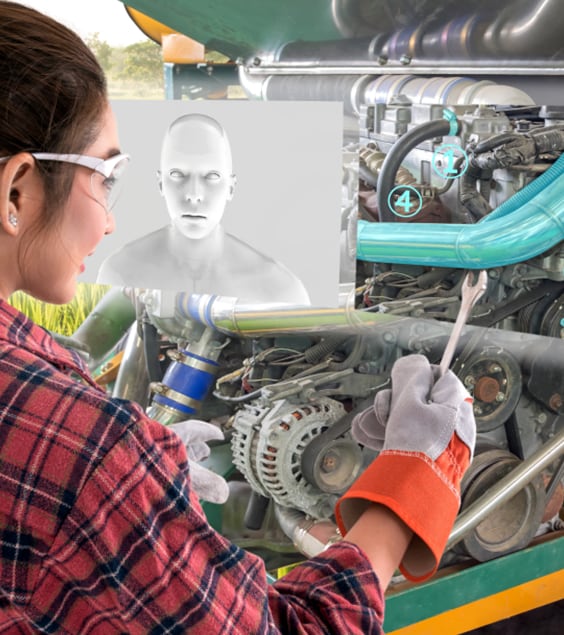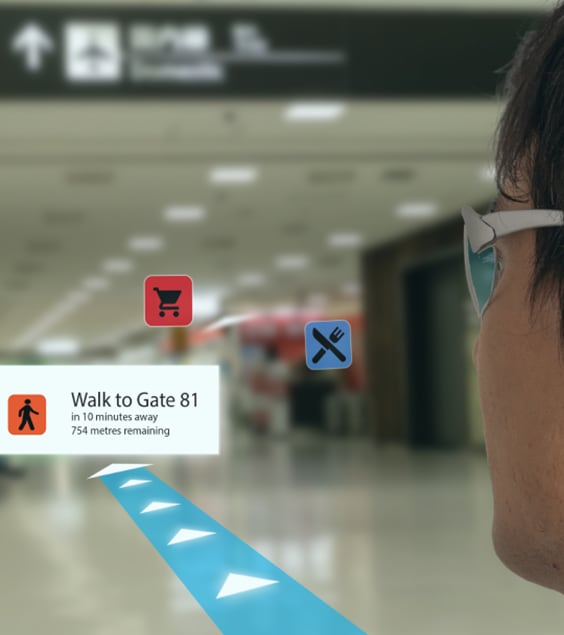We guide light, making digital living more vivid, accessible and real.
What is Augmented Reality (AR) & Virtual Reality (VR)?
AR & VR technologies are rapidly transitioning from experimental phases to mainstream applications, significantly impacting both consumer and enterprise sectors.
These immersive technologies are redefining how we interact with digital content, offering novel experiences that blend the physical and virtual worlds.
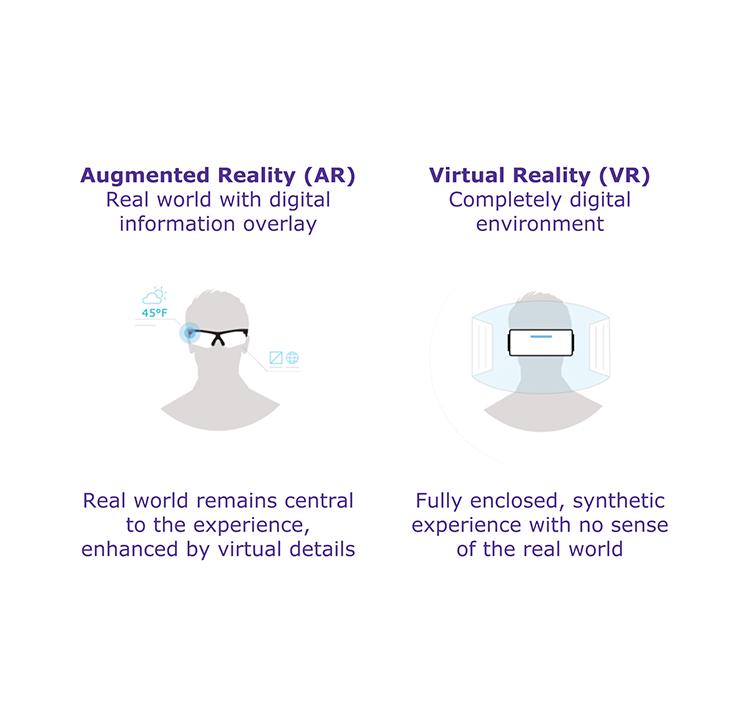
Augmented Reality (AR) overlays digital information onto the real world, enhancing user experiences through devices like smartphones and AR glasses. Virtual Reality (VR) creates a fully immersive, computer-generated environment that users can interact with using VR headsets and controllers, blocking out the physical world.
Each technology leads to unique headset and optics requirements to optimize performance and user engagement experience. That’s where our innovative solutions come in.
Requirements for AR/VR devices and components
The next generation of augmented reality (AR) and virtual reality (VR) devices demands innovative material solutions to create lightweight and efficient optical components. A key goal for the upcoming AR devices is to reduce their weight, enabling comfortable all-day wear. To accomplish this goal, new material solutions and optical components need to be researched and developed. For AR glasses, the optical waveguide is a key optical component, whereas pancake lenses are seen as crucial for VR headsets.
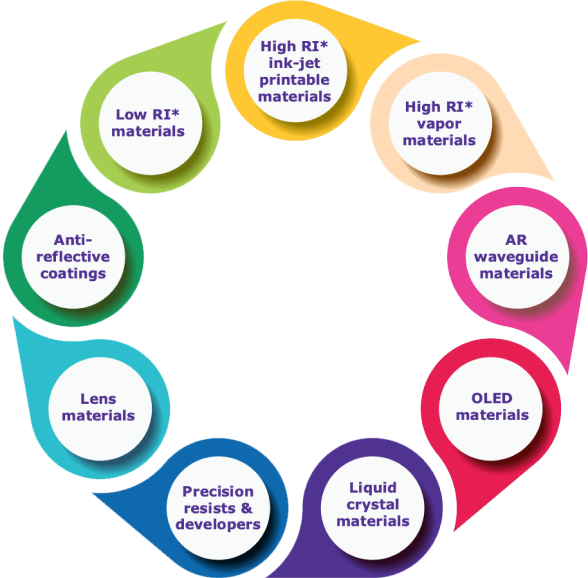
We provide solutions across AR/VR
We focus on improving materials and processing to enable new optical materials for AR and VR.
We are supporting different technologies (agnostic) through
a global set-up.
*RI: Refractive Index
We combine material solutions
This leads to significant advancements in optical components: These formulations can be tailored to suit various processing technologies, for example inkjet printing (IJP), enhancing their processability and overall effectiveness. By adapting these materials to different manufacturing methods, we can optimize performance and streamline production processes for next-generation optical devices.

1 display engine for display generation , 2 gratings for incoupling/outcoupling of image to waveguide, 3 lens systems for light shaping
Optical waveguides are sophisticated devices that manipulate light to create a seamless blend of digital content and the surrounding real environment. These waveguides function by directing light from a display source. As the light travels through the waveguide, it is carefully controlled and refracted to align with the user's line of sight. The result is projected images with real-world visuals.
We help to enhance the overall immersive experience of augmented reality (AR) application through our latest material technology for optical waveguides and combiners.
Our Liquid Crystal and OLED solutions for (micro)displays
The latest material solutions for fast-switching LCD and OLED displays are significantly improving VR headsets. These next-generation materials are specifically engineered for liquid crystal on silicon (LCoS) micro displays, ensuring optimal performance and reliability, particularly in augmented reality (AR) applications. By leveraging advanced technologies, these materials enhance response times and image quality, making them ideal for delivering immersive AR experiences.
We are enabling new technologies for optical components
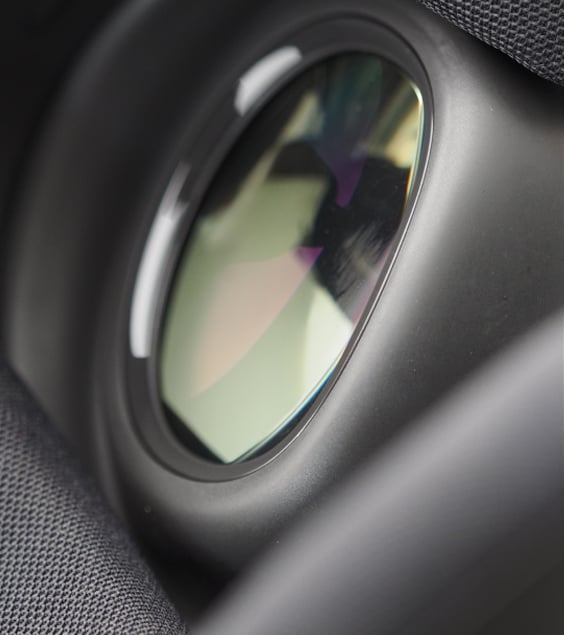
Pancake Lenses
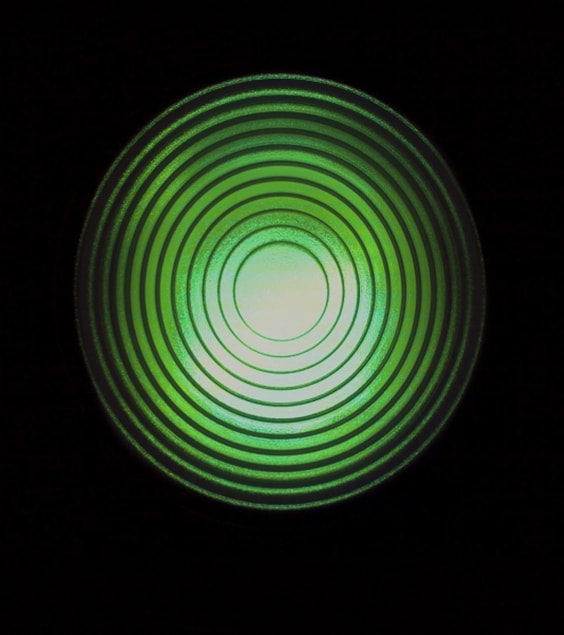
Fresnel Lenses
Our Reactive Mesogen materials are enhancing advanced optical performance systems for VR headsets through pancake lenses.
The pancake lens is a crucial component in advanced optical systems for VR headsets. Pancake lens technology provides several advantages over traditional Fresnel lenses, including reduced thickness and enhanced optical performance. Our innovative materials contribute to improved light management and image clarity, making them ideal for applications requiring compact and efficient optical solutions.
Our Reactive Mesogens solution for flat optical components
Reactive Mesogens are polymerizable Liquid Crystals that possess optical properties holding the power to enhance VR headsets. When combined with an alignment layer, these materials can be utilized to create optical elements such as gratings and lenses. The capability allows for the development of advanced optical components that leverage the unique properties of Reactive Mesogens, enhancing performance in various applications. (Reactive Mesogen film for high efficiency gratings, optimized for optical waveguides and lenses)
We have solutions for Occlusion and Shading in AR glasses
We combine switchable privacy technology based on polymer network liquid crystal (PNLC) to provide a more realistic and visually striking virtual image in AR, significantly improving the overall user experience. Occlusion Dichroic liquid crystal materials are designed for occlusion and shading in augmented reality (AR) glasses, effectively managing ambient light conditions at the pixel level. These materials can block the view of real-world scenes, ensuring that objectives appear opaque rather than transparent. They can also cast shadows
that correspond to the surrounding environment, enhancing realism for the user.
Future Outlook
Advancements in hardware—such as improved sensors and processors—and software innovations powered by artificial intelligence are facilitating more natural and intuitive user interactions. This convergence is enabling applications that were once the realm of science fiction.
Artificial Intelligence and Augmented Reality
